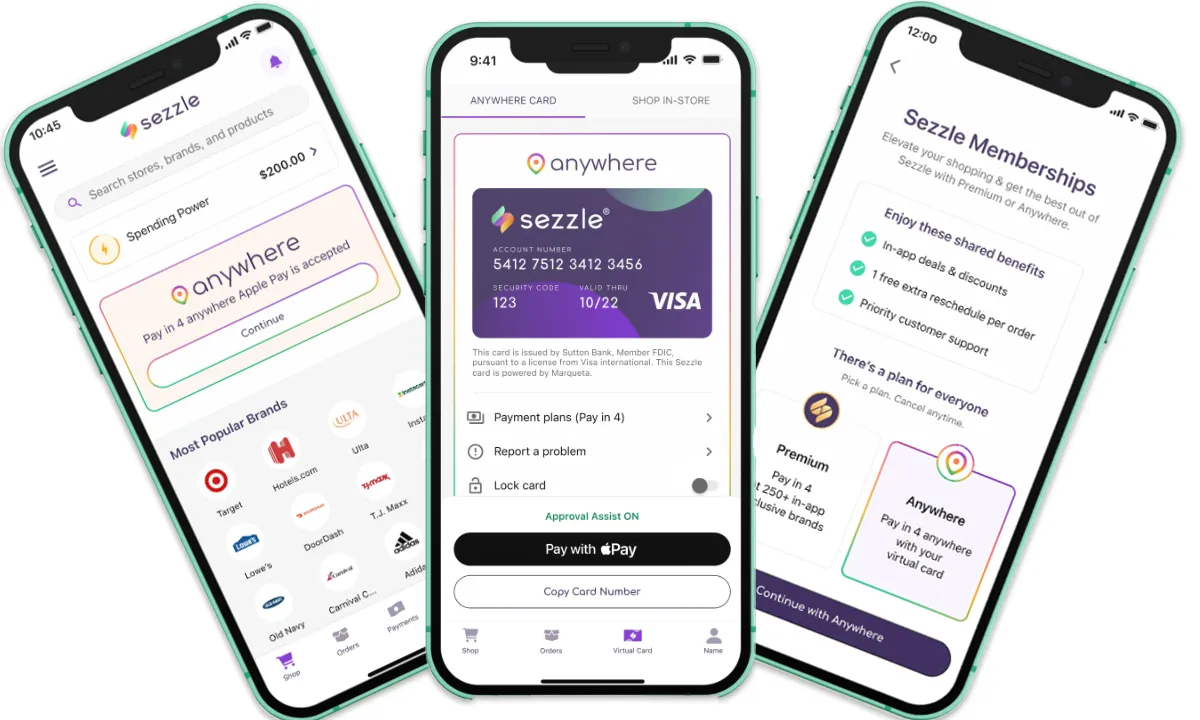Mega-cap tech stocks like Apple, Microsoft, and Amazon dominate markets with innovation in AI, cloud computing, and more, offering high-growth opportunities while influencing global financial trends and shaping future technologies.

The upcoming stimulus package is massive. $1.9 trillion means it wins 2nd place for 2 things: price and confusion. Here’s what’s in it..

President Biden’s massive $1.9 trillion economic stimulus package is planned to leave a massive imprint on the millions that the money goes towards. The president plans on a hopeful step towards righting the wrongs of the past administration, starting with giving hope and support to the people, in a pandemic which has taken over half a million souls in the US alone.
This massive bill was just approved by the Senate on Saturday, planning on providing direct payments to Americans, extend jobless benefits, and give much needed cash inflows towards local and federal governments. Funding goes towards COVID-19 testing and vaccines, antipoverty programs, and so much more.
With all of that being offered, it’s either difficult to see how only $1.9 trillion is being spent on a paragraph of items, or how only a paragraph can be worth $1.9 trillion. That’s what Statural.com’s here for.
$1,400 stimulus checks will go to individuals making under $75,000 per year, and married couples under $150,000. Direct payments would total $1,400 per person, meaning that in a 4-person household, with income of $125,000, they’d receive $6,400. Previously it would be much lower, but dependents also receive checks this time.
These payments would slowdown as income levels increase however, with the checks completely disappearing above $80,000 in income for an individual, or $160,000 for married couples.
Caps were lowered from the House’s previous iteration of the package, which had cutoffs set for $100,000 for individuals and $200,000 for married couples. In my personal opinion, the fault in that, is that people making $100-$200,000 don’t really need the checks. My family falls in those brackets, and we ended up using our checks on local businesses, since we didn’t need them.
The bill extends unemployment-benefit programs through early September, including (but not limited to) the current $300/week federal unemployment benefit, part of the last December stimulus plan.
President Biden’s original plan for the bill would include a bump-up to $400/week in benefits, which was House-approved, although the Senate reduced it back to $300/week.
The stimulus also includes a new provision intended to reject surprise tax bills for recently unemployed people, waving federal income taxes for the first $10,200 in unemployment benefits received in 2020. That would apply for households making under $150,000.
One major effort of this bill to encourage back-to-school, amongst other local and frequent visits, is direct funding towards vaccine distribution and COVID-19 testing, contact tracing, and genome sequencing. The plan is to provide money to the Federal Emergency Management Agency (FEMA), in addition.
The current total amount is $350 billion towards states, local governments, territories, and tribal governments, with $130 billion provided for schools. There’s even more included in the package, such as funding for colleges, universities, transit agencies, housing aid, child care providers, and food assistance.
Adding on to the money flowing into those economies, there’s also funding for businesses including restaurants and live venues, adding in a bailout for multiemployer pension plans that either are, or may become financially troubled as a result of the pandemic.
For fiscal year 2021, the stimulus bill would temporarily expand the child tax credit, which is currently valued at upwards of $2,000 per child under 17. With the new legislation, the credit would be as much as $3,600 per child, up to age 5 and as much as $3,000 for children 6 to 17.
The stimulus bill would make the maximum value of the child credit available to low-income households and individuals who are either ineligible or partially ineligible. For the second half of the year, it would also include guaranteed advance payments of the tax credit, acting as an income form instead of a discount.
The bill will temporarily increase subsidies for people buying healthcare/insurance through the Affordable Care Act. These funds would include billions of dollars for public health programs and services, as well as some specifically for veterans’ health care.
The expansion would also seek to provide help to those who had lost their jobs, helping by attempting to ensure connections to health insurance covering. COBRA, a special federal program, would pay the full cost of premiums through September 2021.
I think this bill is a great addition as COVID relief. There’s still a few major issues with it, although with the roughly $5 trillion going into COVID-related aid within the past year, it’s understandable. My personal opinion for the worst offender, would have to be minimum wage. Yes, I want a higher minimum wage nationally, no I don’t want a $15 mandated wage.
Let me explain. California, $12/hour minimum wage. West Virginia, $8.75/hour. Median California homes, (excludes outliers such as $25 million floating homes) go for $579,332. West Virginia homes go for $107,064. California should get a $15 minimum wage. Things are more expensive, difficult to purchase, and is overall a higher priced state. West Virginia should get maybe a $10 minimum wage. You really don’t need $15 an hour as an equality between California and West Virginia, when Californian homes cost over 5X as much.
I personally believe that the perfect addition to this bill, would have been the addition of federally mandated minimum wage districts. That way, if you have higher average prices, you get a higher minimum wage. If people can live off of $10 per hour, then they should get a $10 per hour minimum wage. That’s all.

Mega-cap tech stocks like Apple, Microsoft, and Amazon dominate markets with innovation in AI, cloud computing, and more, offering high-growth opportunities while influencing global financial trends and shaping future technologies.

CoreWeave posted exceptional Q1 2025 results with revenue reaching $981.6 million, up 420% year-over-year. The AI infrastructure provider secured key partnerships with OpenAI and IBM, while maintaining a 62% Adjusted EBITDA margin. The company’s revenue backlog grew to $25.9 billion, bolstered by OpenAI’s $11.2 billion strategic commitment.

E-commerce giant Shopify delivered exceptional Q1 2025 results with revenue up 27% to $2.36B and operating income doubling to $203M, while maintaining strong merchant growth and platform adoption.
The upcoming stimulus package is massive. $1.9 trillion means it wins 2nd place for 2 things: price and confusion. Here’s what’s in it..

President Biden’s massive $1.9 trillion economic stimulus package is planned to leave a massive imprint on the millions that the money goes towards. The president plans on a hopeful step towards righting the wrongs of the past administration, starting with giving hope and support to the people, in a pandemic which has taken over half a million souls in the US alone.
This massive bill was just approved by the Senate on Saturday, planning on providing direct payments to Americans, extend jobless benefits, and give much needed cash inflows towards local and federal governments. Funding goes towards COVID-19 testing and vaccines, antipoverty programs, and so much more.
With all of that being offered, it’s either difficult to see how only $1.9 trillion is being spent on a paragraph of items, or how only a paragraph can be worth $1.9 trillion. That’s what Statural.com’s here for.
$1,400 stimulus checks will go to individuals making under $75,000 per year, and married couples under $150,000. Direct payments would total $1,400 per person, meaning that in a 4-person household, with income of $125,000, they’d receive $6,400. Previously it would be much lower, but dependents also receive checks this time.
These payments would slowdown as income levels increase however, with the checks completely disappearing above $80,000 in income for an individual, or $160,000 for married couples.
Caps were lowered from the House’s previous iteration of the package, which had cutoffs set for $100,000 for individuals and $200,000 for married couples. In my personal opinion, the fault in that, is that people making $100-$200,000 don’t really need the checks. My family falls in those brackets, and we ended up using our checks on local businesses, since we didn’t need them.
The bill extends unemployment-benefit programs through early September, including (but not limited to) the current $300/week federal unemployment benefit, part of the last December stimulus plan.
President Biden’s original plan for the bill would include a bump-up to $400/week in benefits, which was House-approved, although the Senate reduced it back to $300/week.
The stimulus also includes a new provision intended to reject surprise tax bills for recently unemployed people, waving federal income taxes for the first $10,200 in unemployment benefits received in 2020. That would apply for households making under $150,000.
One major effort of this bill to encourage back-to-school, amongst other local and frequent visits, is direct funding towards vaccine distribution and COVID-19 testing, contact tracing, and genome sequencing. The plan is to provide money to the Federal Emergency Management Agency (FEMA), in addition.
The current total amount is $350 billion towards states, local governments, territories, and tribal governments, with $130 billion provided for schools. There’s even more included in the package, such as funding for colleges, universities, transit agencies, housing aid, child care providers, and food assistance.
Adding on to the money flowing into those economies, there’s also funding for businesses including restaurants and live venues, adding in a bailout for multiemployer pension plans that either are, or may become financially troubled as a result of the pandemic.
For fiscal year 2021, the stimulus bill would temporarily expand the child tax credit, which is currently valued at upwards of $2,000 per child under 17. With the new legislation, the credit would be as much as $3,600 per child, up to age 5 and as much as $3,000 for children 6 to 17.
The stimulus bill would make the maximum value of the child credit available to low-income households and individuals who are either ineligible or partially ineligible. For the second half of the year, it would also include guaranteed advance payments of the tax credit, acting as an income form instead of a discount.
The bill will temporarily increase subsidies for people buying healthcare/insurance through the Affordable Care Act. These funds would include billions of dollars for public health programs and services, as well as some specifically for veterans’ health care.
The expansion would also seek to provide help to those who had lost their jobs, helping by attempting to ensure connections to health insurance covering. COBRA, a special federal program, would pay the full cost of premiums through September 2021.
I think this bill is a great addition as COVID relief. There’s still a few major issues with it, although with the roughly $5 trillion going into COVID-related aid within the past year, it’s understandable. My personal opinion for the worst offender, would have to be minimum wage. Yes, I want a higher minimum wage nationally, no I don’t want a $15 mandated wage.
Let me explain. California, $12/hour minimum wage. West Virginia, $8.75/hour. Median California homes, (excludes outliers such as $25 million floating homes) go for $579,332. West Virginia homes go for $107,064. California should get a $15 minimum wage. Things are more expensive, difficult to purchase, and is overall a higher priced state. West Virginia should get maybe a $10 minimum wage. You really don’t need $15 an hour as an equality between California and West Virginia, when Californian homes cost over 5X as much.
I personally believe that the perfect addition to this bill, would have been the addition of federally mandated minimum wage districts. That way, if you have higher average prices, you get a higher minimum wage. If people can live off of $10 per hour, then they should get a $10 per hour minimum wage. That’s all.

Mega-cap tech stocks like Apple, Microsoft, and Amazon dominate markets with innovation in AI, cloud computing, and more, offering high-growth opportunities while influencing global financial trends and shaping future technologies.

CoreWeave posted exceptional Q1 2025 results with revenue reaching $981.6 million, up 420% year-over-year. The AI infrastructure provider secured key partnerships with OpenAI and IBM, while maintaining a 62% Adjusted EBITDA margin. The company’s revenue backlog grew to $25.9 billion, bolstered by OpenAI’s $11.2 billion strategic commitment.

E-commerce giant Shopify delivered exceptional Q1 2025 results with revenue up 27% to $2.36B and operating income doubling to $203M, while maintaining strong merchant growth and platform adoption.

Buy-now-pay-later leader Sezzle shattered Q1 expectations with revenue surging 123% to $104.9M, as net income quadrupled to $36.2M. The fintech company raised 2025 guidance on strong performance across all metrics.